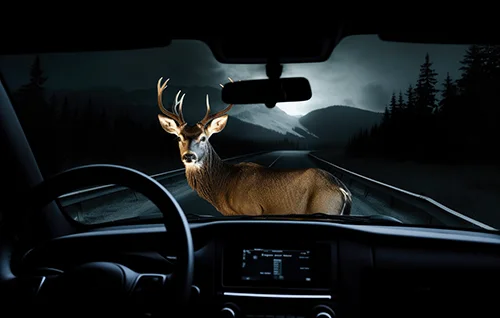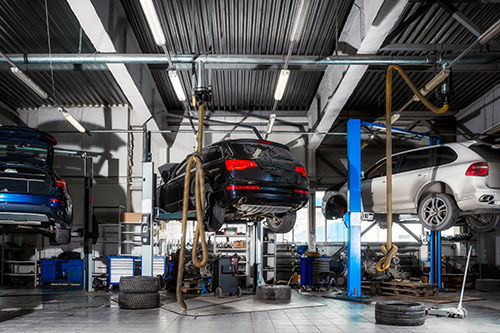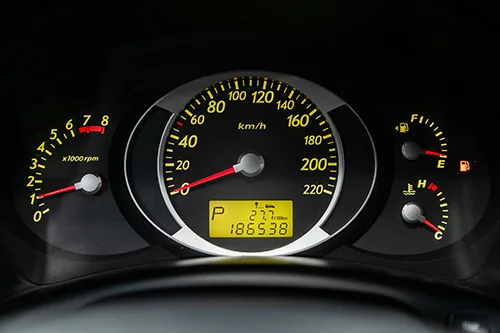
Give wildlife a “brake” and lower your risk of hitting an animal
Wild animals are forced to cross roads and highways in search of food, water, cover and mates—placing them in the path of our speeding vehicles. Each year, there are roughly 1.5 million vehicle collisions just with deer on U.S. roadways.
How can I avoid hitting an animal with my car?
First and foremost, slow down! Keeping your speed in check gives you a better chance of stopping in time if an animal darts into the road.
- Follow speed limits. Many animals are hit simply because people drive too fast to avoid them. Taking it slow makes the roads safer for other drivers and pedestrians, too.
- Watch for wildlife in and near the road at dawn, dusk and in the first few hours after darkness. Keep in mind that where there is one animal, there are probably others—young animals following their mother or male animals pursuing a female.
- Be especially cautious on two-lane roads bordered by woods or fields, or where streams cross under roads. Most animal/vehicle collisions occur on these roads. Slow down to 45 mph or less.
- Scan the road as you drive, watching the edges for wildlife about to cross. This will also make you more aware of other hazards such as bicyclists, children at play and slow-moving vehicles.
- Don’t throw trash out car windows. Discarded food pollutes the environment and creates a hazard by attracting wildlife to the roads.
- Use your high beams whenever possible.
- Lower your dashboard lights slightly. You'll be more likely to see your headlights reflected in the eyes of animals in time to brake.
How can I help an injured animal?
Sometimes collisions are unavoidable, no matter how careful we are. Here's what to do if you hit an animal or come across an injured one.
- Do not put your own safety at risk. Unless you can move the animal from the road in absolute safety, do not attempt to do so. Use your hazard lights or emergency road flares to warn oncoming traffic of the injured animal. Never attempt to handle a large animal like a deer, or one that could give a serious bite, like a raccoon.
- Call someone with the proper training and equipment. When you need assistance, call the non-emergency number of the local police department (program the phone number into your cell phone right now so you have it when you need it) and describe the animal's location. Emphasize that the injured animal is a traffic hazard to help ensure that someone will come quickly. Stay in the area until help arrives.
- Use heavy gloves to protect yourself or avoid direct handling if you try to rescue a small animal yourself. Remember that the animal doesn't know you are trying to help and may bite or scratch in self-defense. An old towel is helpful if you need to move an injured animal.
- Gently coax or place the animal into a cardboard box and transport him/her to an animal shelter, wildlife rehabilitator or a receptive veterinarian. If there is a delay, keep the animal in a dark, warm, quiet place to minimize fear and stress.
- If you accidentally kill an animal, try to move the animal off the road—but only if you can do so in complete safety. Otherwise, report the location of the animal's body to the local police department, and it will arrange for removal. This will prevent scavengers from being attracted onto the road and eliminate a potential traffic hazard.
Source: humanesociety.org




